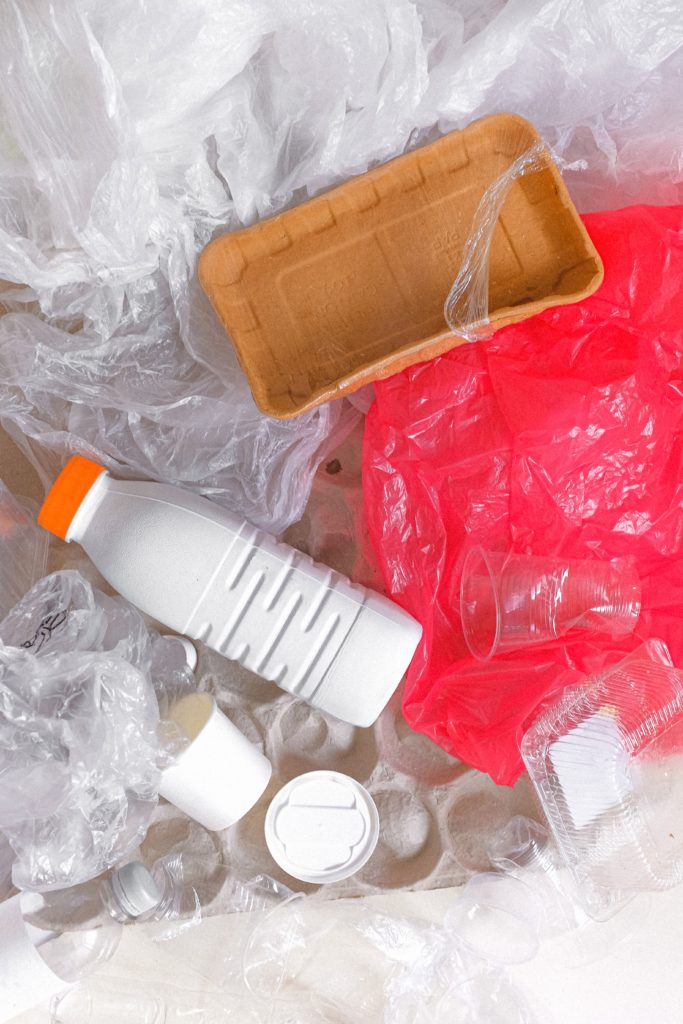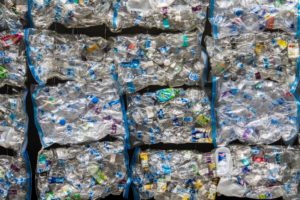
Blog
Standardized Data is the First Step to Saving American Recycling
Recycling isn’t a new concept. From the 1800s, when out-of-style fashions or old furniture was transformed into something new by local artisans, through World War II, as Americans collected scrap metal for victory, and in 1980, when Woodbury, New Jersey, became the first city with a curbside recycling program, recycling has been around — in some form — for generations.
Why are we still so bad at it?
The Environmental Protection Agency (EPA) reports that in 2017, the recycling rate in the United States, which includes materials recycled and composted, was 35.2%. It’s a low number — especially as more companies make and meet commitments for 100% recyclable packaging — but is it even accurate?
In reality, no one knows what the true recycling rate is in the United States. EPA works with the information they have, but it’s virtually unknowable, because there is no standardized reporting mechanism for how much is being collected, recycled, what can be recycled or even what falls under the definition of “recycling.”
America’s recycling system was born piecemeal, town-by-town and county-by-county. The unintended consequence of good intentions is a recycling system built with no harmonized foundation.
To fix recycling, we need to understand the scope of the problem and what’s working — and we can’t do that without consistent, reliable data.
The fragmented system survived largely unnoticed for decades until its fundamental problems were exposed by the effects of China’s National Sword policy and then COVID-19 budget cuts setting in — now, the proverbial house is falling apart, and a new coat of paint isn’t going to suffice any longer.
To fix recycling, we need to understand the scope of the problem and what’s working — and we can’t do that without consistent, reliable data.
A patchwork of systems and data
America’s recycling system isn’t actually a system at all. There are nearly 10,000 programs operating in the United States, all run by individual municipalities or local governments, and each with their own rules around what can or can’t be recycled. This causes consumer confusion, and in turn, contamination, when the whole lot is landfilled because trash winds up in the recycling stream.
And the differences between these thousands of systems don’t just stop at what items are accepted — how recycling is measured also varies from system to system, with some counting by volume others by material type, still others not collecting state-wide data at all, painting an unclear picture of what America’s true recycling rate is.
So how does the EPA come up with the 35% figure? Nationally, the agency uses a materials flow methodology, which, in short, is a complicated best effort using the fragmented and inconsistent data available to the agency. Using data sources including waste characterizations and surveys performed by state and local governments, stakeholder industries, media and others, the agency then estimates the tons of materials and products generated, recycled or discarded. These third-party estimates are varied, and sometimes promoted by interest groups who could have a heightened stake in inflating recycling numbers.
It may be the best approach the EPA has, but it is a flawed approach all the same.
Why haven’t we done this already?
The EPA is cognizant of the data problem. In fact, in 1997, the agency attempted to develop a standardized measurement system for all state and local governments to report with — to no avail. More than two decades later, however, it seems worth another try.
To be clear, it is neither easy nor simple to standardize data reporting. It requires the cooperation of many stakeholders — from waste haulers to local governments, product manufacturers to packaging companies — changing longstanding practices. But continuing to try to fix recycling without knowing what’s actually happening with recycling, just won’t work.
The task may be daunting, but there is precedent. As of 2018, there were 130,930 K-12 public schools in the United States — all of which report to the U.S. Department of Education. Between enrolled student counts, test scores, graduation rates and more, consistent reporting is required. Collecting recycling data from around the country should be a similar task.
Bottom line: you can’t manage what you can’t measure and today, the United States can’t reliably measure our recycling rate.
Funding should support solutions, not be the solution
According to Consumer Brands research, 82% of Americans are concerned about the environment and 62% believe improving the recycling system is the most effective way to deal with plastic waste — handing legislators the perfect opportunity to capitalize on agreement and take action. But today, some government leaders are almost exclusively focused on the money — where it’s coming from, how much and how it can be increased.
Without proper data as a first step, we’re throwing money at the problem rather than determining what money is needed and where and how it should be allocated to have the greatest impact.
There is no question it will be expensive to fix the American recycling system. There is also no question that it is worth doing. We must, however, ask ourselves if we are taking the steps now to ensure it is money well spent. Without proper data as a first step, we’re throwing money at the problem rather than determining what money is needed and where and how it should be allocated to have the greatest impact.
Without a clear idea of what is being funded, the money has the potential to be wasted on solutions that don’t actually work, or worse, reallocated for items unrelated to solving our recycling crisis, especially as state and local governments are faced with budget fallouts after COVID-19.
Money collected in the name of recycling must be dedicated exclusively to recycling. Already, funding collected from bottle bills in many states goes to the general fund. In Massachusetts, for example, 100% of bottle bill revenue, $50 million annually, goes to the general fund. In California, it’s $308 million year. With cash-strapped governments desperate for solutions, money that should be for recycling could serve as a piggy bank for a host of unrelated projects. Regardless of the merit of those projects, it would be yet another way we’re failing recycling and the environment.
It’s time to compel change
Recycling enjoys unique bipartisan support and is in dire need. It is time for Congress to pass legislation that will standardize recycling reporting, giving each system uniform tools and guidelines. Only then will we know the true recycling rate in America — and the paths to fixing what’s broken.
Asking for this important baseline will take time but will ultimately accelerate progress. With reliable information in-hand, every stakeholder needed to fix the recycling system will be empowered with the knowledge to do so.
Every day we wait is another day we aren’t cleaning up the environment, we aren’t removing recyclable waste from our landfills and waterways and we aren’t reducing our footprint. Consumers are ready for the change — is government ready to help tackle the challenge?
Published on November 13, 2020




